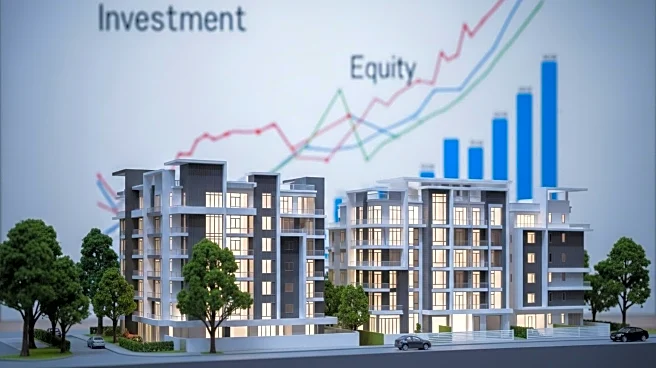What's Happening?
Perkins Eastman has announced a significant advancement in its approach to energy performance modeling across its projects. According to the firm's latest sustainability report, nearly 99% of the 260 projects submitted to the AIA 2030 commitment in 2024 included energy modeling, a substantial increase from 49% in 2023. This initiative is part of Perkins Eastman's effort to refine project performance tracking, grounding its design process in data and analysis to make decarbonization goals actionable. One notable project is the La Mora Senior Apartments in Yonkers, New York, which is the nation's first modular-built, Phius-certified senior housing facility, providing affordable, high-performance homes for seniors while optimizing cost, schedule, and environmental impact.
Why It's Important?
The push by Perkins Eastman to standardize energy modeling is a significant step towards sustainable architecture and construction practices. By achieving an average 59.91% reduction in predicted energy use intensity (pEUI) in modeled projects, the firm is contributing to the broader industry goal of reducing carbon footprints and enhancing energy efficiency. This move not only aligns with global sustainability targets but also sets a precedent for other firms to follow suit, potentially leading to widespread adoption of energy modeling in architectural design. The impact on U.S. industries, particularly construction and real estate, could be profound, as it encourages environmentally responsible practices and could influence policy and regulatory standards.
What's Next?
Perkins Eastman's commitment to energy modeling is likely to influence future projects and collaborations within the industry. As more firms recognize the benefits of energy modeling, there may be increased demand for expertise in this area, leading to potential partnerships and innovations in sustainable design. Stakeholders such as government agencies, environmental groups, and industry leaders may respond by advocating for policies that support energy-efficient building practices. Additionally, clients and investors may prioritize projects that demonstrate a commitment to sustainability, potentially reshaping market dynamics.
Beyond the Headlines
The emphasis on energy modeling by Perkins Eastman highlights the ethical responsibility of architects and builders to consider environmental impacts in their designs. This approach not only addresses immediate energy efficiency concerns but also contributes to long-term sustainability goals. As the industry evolves, there may be increased scrutiny on the environmental credentials of construction projects, influencing cultural perceptions of architecture and design. The integration of energy modeling could also lead to advancements in technology and data analytics, further enhancing the capabilities of sustainable design.












